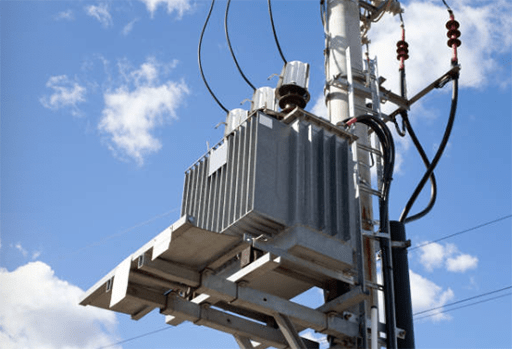
Figure 1: Transformers.
1. What is a Transformer and Why is it Used
A Transformer is a static piece of electrical equipment which transfers power from one voltage system to another by means of electromagnetic induction. At the basic level, all transformers consist of a metallic coil which carries the electric current, and a ferrous core which creates the magnetic field. The reason for using a transformer is to match the voltage of the load to the line voltage supplied by the utility. The dry type, air-cooled transformers contains no volatile nor inflammable materials, and depends only on the natural flow of air over its coils, and the radiation of heat through its enclosure for cooling. Therefore, it may be located right at the load and requires no special vault.
2. How Can I Select the Best Transformer for My Application
Transformers are available in a wide array of voltages. The capacity (volt-amps) dictates how much power a particular device can handle before overloading.
The application plays a pivotal role in selecting the correct transformer. Instances where the typical load may spike must be taken into consideration when selecting a particular transformer.
2.1 Step 1: Determine the KVA, Amperes or Wattage Required by the Load
Determine the KVA, Amperes or wattage required by the load. Transformer size is determined by the KVA of the load. Be sure to add the total number of pieces of equipment involved. The following formulas may be used to calculate the KVA, (VA) or the Amperes required, for either single or three phase installations:

Figure 2: Determine the KVA, Amperes or wattage required by the load.
Single phase:
KVA = Volts x Amps
(VA) 1000
AMPS=KVA(VA) x 1000
Volts
Three phase:
KVA =1.73 x Volts x Amps
(VA) 1000
AMPS= KVA(VA) x 1000
1.73 x Volts
KVA stands for kilovolt ampere or thousand volt ampere. Smaller units 500 VA = 0.5 KVA. Single-phase has two lines of AC power. Three-phase has three lines of AC power, with each line 120 degrees out of phase with the other two.
2.2 Step 2: Find Out the Supply Voltage
Find out what the supply voltage (or available voltage) is to connect to the primary of the transformer. Line voltage, or primary voltage, is the available power from your utility or local power source.

Figure 3: Find out what the supply voltage (or available voltage).
2.3 Step 3: Determine the Voltage Required by the Load
Determine the voltage required by the load. This is the secondary voltage or output voltage of the transformer. Load voltage, or secondary voltage, is the voltage required to operate the load (lights, motor and other devices).
2.4 Step 4: Determine the Frequency of the Supply Source
What is the frequency of the supply source and of the equipment (normally 60 or 50 hertz)? The frequency of the supply source and the load must be the same.
2.5 Step 5: Determine the Model of the Transformer

Figure 4: Determine the Model of the Transformer.
Determine the model of the transformer. To do so, you need to consider a few factors first:
1.Does your equipment require electrical isolation from the supply or will an auto transformer with no isolation do?
2.For control transformers: if fusing is desired, a terminal block model is necessary.
3.If a control transformer is to be exported, a finger-safe model option may be required.
The location where the transformer will be installed will determine whether you require no enclosure (open type), an indoor ventilated enclosure, or the various types of enclosures which protect the windings from moisture, particles, dust or contaminates.
Related Info
What is a Transformer?Classification and How Does a Transformer Work?
10 Common Types of Transformer?
How Does a VFD Work?


